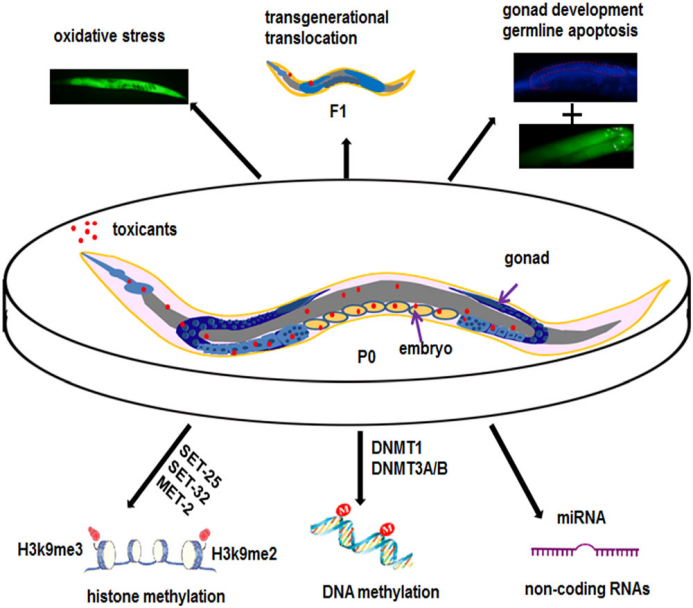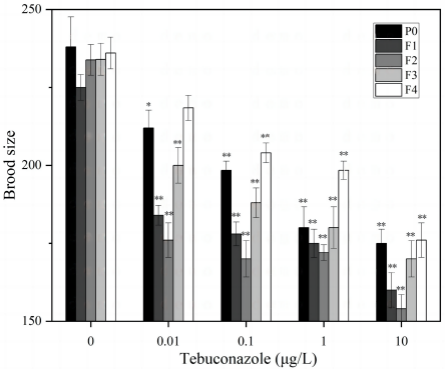Trans-generational Toxicity Analysis Services
Modern industrial and agricultural pollutants, especially heavy metals and organic pollutants, not only harm present organisms, but may also pose risk to future generations through transgenerational toxicity. Evaluating these effects is crucial for understanding long-term exposure, genetic toxicity.
With its short generation cycle (3-4 days) and highly homologous to human genes, C. elegans is an ideal model for studying environmental exposure toxicity or the transmission of drug toxicity across multiple generations. Through our services, you can systematically understand the long-term toxic effects of a chemical in the environment, as well as whether it has possible genetic toxicity, transgenerational effects , and ecological risks .

Fig.1 Cellular and molecular mechanisms for transgenerational toxicity induction of toxicants in nematodes. (Zhao Y, et al . 2023)
Our transgenerational toxicity assessments in C. elegans include but are not limited to:
ØIntergenerational Exposure Analysis
Examine the effects of chemicals on C. elegans growth, development, and reproduction(usually 2-4 generations) to assess cross-generational impacts.
ØGenotoxicity Assessment
Investigate whether chemicals will cause mutations or genomic instability, lead to genetic variations or chromosomal abnormalities in the offspring of C. elegans, and reveal the potential damage of substances to genes.
ØTransgenerational Toxicity and Developmental Toxicity
Focus on whether cross-generational exposure affects the reproductive capacity, growth rate, normal development, etc. of the offspring of C. elegans, especially identifying potential toxic accumulation effect between grandparents and offspring .
ØAnalysis of Changes in Physiological Functions
By observing how cross-generational effects affect the behavior, lifespan, motor skills and other physiological functions of the offspring, we can understand whether they will have an adverse impact on the adaptability of the population over a long period of time.

Fig.1 Effects of exposure to different concentrations of compounds on the transgenerational fecundity of Caenorhabditis elegans
References
1. Zhao Y, Chen J, Wang R, et al. A review of transgenerational and multigenerational toxicology in the in vivo model animal Caenorhabditis elegans. J Appl Toxicol . 2023 Jan ;43 (1):122-145. doi : 10.1002/jat.4360.


